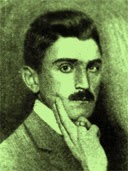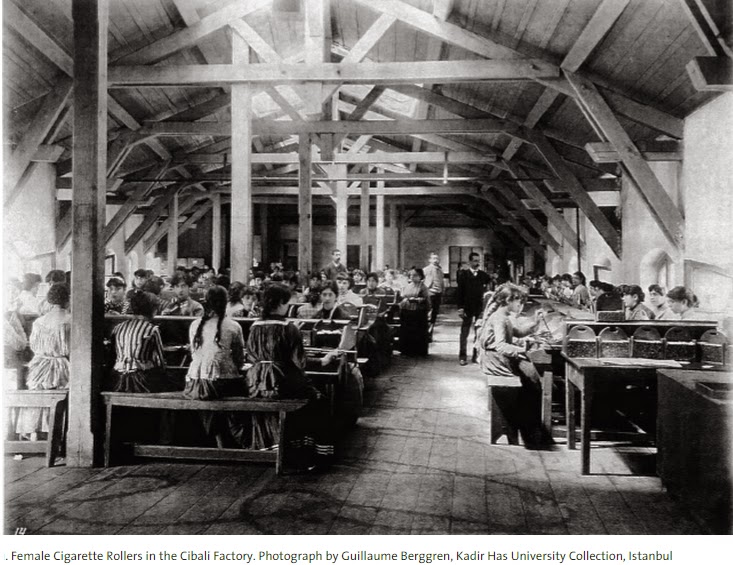Mavi Boncuk |
U.S. Advisory Aid to Turkey: The Hines-Kemmerer Mission, 1933-1934
Early in 1933 the Turkish Government, via its Ambassador in Washington, Ahmet Muhtar, approached the U.S. Department of State for assistance in locating Americans to fill these posts. Walker D. Hines, partner in the New York-based law firm of Hines, Rearick, Dorr, Travis & Marshall and an experienced international arbiter on commercial disputes was selected to fill the Economic Specialist position and head the American mission to Turkey. The team that Hines chose to assist him included two of his legal associates, Goldthwaite Dorr[1] and H. Alexander Smith, who would remain in New York, Major Brehon B. Somervell on loan from the U.S. Army Corps of Engineers in the War Department, and O.F. Gardner, an agriculture and forestry expert, both of whom preceded Hines to Turkey and began the survey in April 1933.
Hines arrived in June to supervise the findings; however, illness kept him in Europe for most of the fall and he died in Italy in January 1934. Hines’s New York associates feared losing the contract, and after much discussion decided to contact Princeton Professor Edwin W. Kemmerer, the noted “money doctor of Latin America,” to assist in drafting the report. Dorr then took over the direction of the survey in Turkey in January 1934 and sent draft after draft of each of the various sections back to the U.S. during the spring. A Turkish ‘brain trust’ consisting principally of Edwin W. Kemmerer, H. Alexander Smith, and Vaso Trivanovitch of the National Industrial Conference Board, conferred on a weekly basis and sent commentaries on revisions back to the agents in the field.
See more: U.S. ADVISORY AID TO TURKEY:THE HINES-KEMMERER MISSION,1933-1934 by Marcie J. Patton
[1] John Van Nostrand Dorr II Born in New York City, May 16, 1910, the second son and middle of three children of Virginia Elbert Dorr and Goldthwaite Higginson Dorr, a corporation lawyer. After Harvard, during the Depression and with no clear idea of what to do with his life, Jack headed for Europe. For the next year he soaked up culture and history in and near Vienna, living much of that time in the household of a former mayor of that city, a family friend. In 1933, through family connections, he obtained a position as a staff aide with an economic commission to Turkey. He frequently accompanied the commission geologist, Sidney Paige, on visits to mineral properties and acquired an absorbing interest that led ultimately to a career focused on mineral-deposit geology and the role of mineral resources in national economies. Returning to the United States in 1934, and newly married to his first wife, Mary Elizabeth Brigham, whom he had met in Turkey, Jack enrolled at the Colorado School of Mines, and in three years graduated with a degree in geological engineering. After nine months with the Superior Oil Company in west Texas, Jack joined the U.S. Geological Survey in 1938.
U.S. Advisory Aid to Turkey: The Hines-Kemmerer Mission, 1933-1934
Early in 1933 the Turkish Government, via its Ambassador in Washington, Ahmet Muhtar, approached the U.S. Department of State for assistance in locating Americans to fill these posts. Walker D. Hines, partner in the New York-based law firm of Hines, Rearick, Dorr, Travis & Marshall and an experienced international arbiter on commercial disputes was selected to fill the Economic Specialist position and head the American mission to Turkey. The team that Hines chose to assist him included two of his legal associates, Goldthwaite Dorr[1] and H. Alexander Smith, who would remain in New York, Major Brehon B. Somervell on loan from the U.S. Army Corps of Engineers in the War Department, and O.F. Gardner, an agriculture and forestry expert, both of whom preceded Hines to Turkey and began the survey in April 1933.
Hines arrived in June to supervise the findings; however, illness kept him in Europe for most of the fall and he died in Italy in January 1934. Hines’s New York associates feared losing the contract, and after much discussion decided to contact Princeton Professor Edwin W. Kemmerer, the noted “money doctor of Latin America,” to assist in drafting the report. Dorr then took over the direction of the survey in Turkey in January 1934 and sent draft after draft of each of the various sections back to the U.S. during the spring. A Turkish ‘brain trust’ consisting principally of Edwin W. Kemmerer, H. Alexander Smith, and Vaso Trivanovitch of the National Industrial Conference Board, conferred on a weekly basis and sent commentaries on revisions back to the agents in the field.
See more: U.S. ADVISORY AID TO TURKEY:THE HINES-KEMMERER MISSION,1933-1934 by Marcie J. Patton
[1] John Van Nostrand Dorr II Born in New York City, May 16, 1910, the second son and middle of three children of Virginia Elbert Dorr and Goldthwaite Higginson Dorr, a corporation lawyer. After Harvard, during the Depression and with no clear idea of what to do with his life, Jack headed for Europe. For the next year he soaked up culture and history in and near Vienna, living much of that time in the household of a former mayor of that city, a family friend. In 1933, through family connections, he obtained a position as a staff aide with an economic commission to Turkey. He frequently accompanied the commission geologist, Sidney Paige, on visits to mineral properties and acquired an absorbing interest that led ultimately to a career focused on mineral-deposit geology and the role of mineral resources in national economies. Returning to the United States in 1934, and newly married to his first wife, Mary Elizabeth Brigham, whom he had met in Turkey, Jack enrolled at the Colorado School of Mines, and in three years graduated with a degree in geological engineering. After nine months with the Superior Oil Company in west Texas, Jack joined the U.S. Geological Survey in 1938.

















.jpg)







.png)


